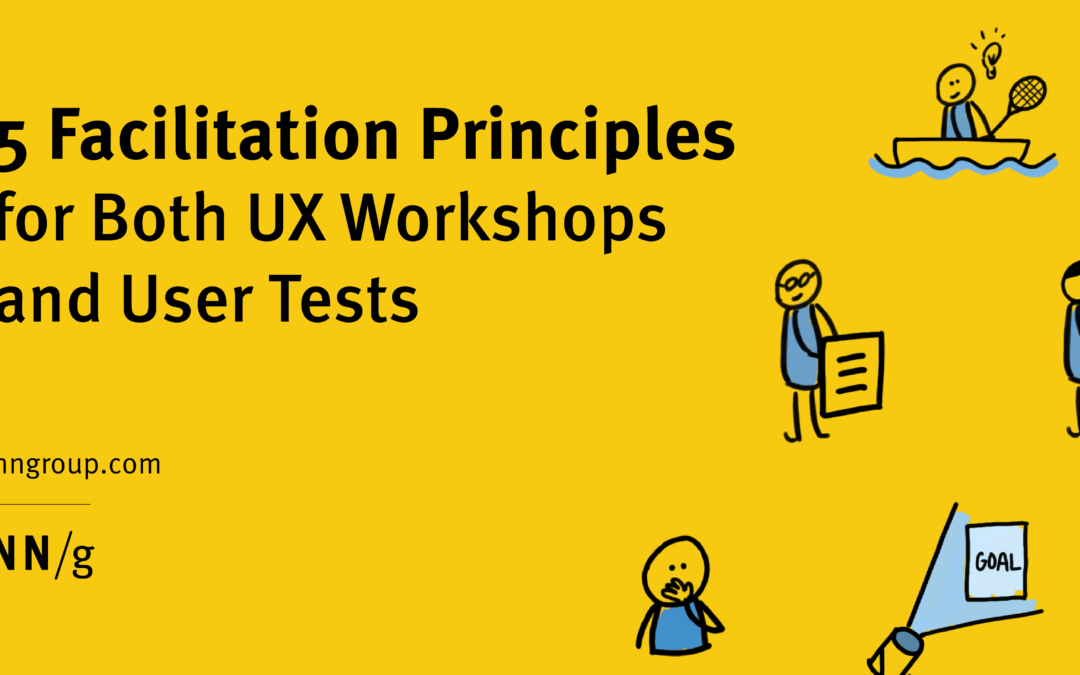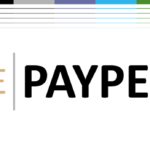UX designers often profess they have strengths in facilitating UX workshops, but weaknesses in conducting research. On the flipside, many UX researchers feel unprepared for facilitating UX workshops but have command over a multitude of user-research methods.
The truth is that facilitating workshops and moderating user tests are not so different: you can transfer your facilitation skills from one to the other. This article discusses 5 facilitation techniques that can be applied in both settings.
Differences Between UX Workshops and User Tests
At their core, UX workshops and user tests are quite different; a few of the major differences are summarized in the table below.
|
|
Workshops |
User Tests |
|
Goals |
Collaborate to achieve a desired outcome |
Study a design to learn about what does and doesn’t work and why |
|
Participants |
Internal stakeholders and product-team members |
Target users |
|
Interaction |
Participants collaborate and work together. |
Participant works alone, observed by facilitator and team. |
|
Facilitation focus |
Help the team to reach a shared understanding and agreement |
Run a sound study, gather observations and quotes (but not a final decision or design ideas). |
|
Method |
Input from participants is grouped and prioritized during the workshop. |
Input from the test participants is collected, but not analyzed during the test. |
Facilitation Principles That Transfer Across Settings
Even with these differences, 5 important facilitation principles naturally carry over between workshops and usability tests. These are:
- Begin with goals or research questions (not activities or user tasks).
- Follow a guide.
- Be open to improvisation.
- Encourage action.
- Don’t take center stage.
1. Begin with Goals or Research Questions (Not Activities or User Tasks)
Effective workshops and usability tests begin with goals. What is desired from the workshop? Which questions do we want answered from the usability test?
Examples of UX-workshop goals are:
- Define a UX vision for the project.
- Generate 2 design alternatives for the checkout flow.
Examples of goals for user tests are:
- What makes searching on the website easy or difficult, and why?
- Do users discover the Compare feature when performing top tasks? Why or why not?
After the goals are declared and agreed upon by stakeholders, the facilitator can begin planning the workshop agenda or the user tasks for the test. And, during the workshop, the facilitator posts and reviews the workshop’s goals in order to keep participants focused.
In user tests, facilitators tell observers which research questions drive each user task and consult them during the test to decide if they need more evidence to address those questions.
When planning and facilitating a workshop, it’s tempting to start by choosing the activities participants will do. Similarly, when planning usability tests, you may want to dive right in to writing user tasks. But don’t bypass the very important first step of defining goals: state what you are trying to achieve and remind the workshop participants and test observers that you will focus on these things.
2. Follow a Guide
Skilled facilitators make everything look easy. But if you’re observing a great test or participating in an awesome workshop, chances are the facilitator spent many hours getting ready for it and is probably following a detailed guide throughout. A guide includes an agenda, reminders, goals, research questions, and many other elements. For example, a workshop facilitator’s guide may include information like:
- the list of activities
- backup activities
- schedule and timing of each activity
A user-test facilitator’s guide may include:
- user tasks for the participants
- research questions related to each task
- the happy path for each task (i.e., the most efficient way to achieve that task)
- how a prototype is meant to act in various places
- post-task and post-test question
3. Improvise
Even with a guide, great facilitators know when and how to improvise. For example, if, during a workshop, they see that an activity is not productive, they may give more direction.
In a usability test, if the participant is very interested in a part of the interface that isn’t in the test plan and the team is learning helpful things, the facilitator may encourage the person to proceed or may even make up some related tasks in the moment.
Planning is important, but we cannot predict what a user will do or how our teams will act when they collaborate. If we could, we probably would not need testing or workshops at all. And this unpredictability is the real value of these methods. So, plan, listen, pause, think, then adapt as needed.
4. Encourage Action
In both user tests and workshops, participants are meant to do things. In a usability test, we aim to get participants to do activities, not tell us how they think they might try them. In a workshop, we don’t want participants passively observing; rather, for optimal outcomes, we need everyone to fully participate.
It can be challenging to get people to act. Workshop participants can get tired or bored. Test participants may not understand what they’re supposed to do or even that they must act, not just talk.
To get test participants to act, each test task should include a clear call to action. For example, rather than asking How would you find an insurance policy for your home? try Find an insurance policy you might want for your home. See the difference? The first is a question and beckons a verbal response. The second is a command that asks the user to do something.
If your workshops have inactive or low-energy participants, insert variations such as having people move around the room, alternating between group and pair work, or even taking a break.
5. Don’t Take Center Stage
Humans like to connect and share. Being with other people and not talking to them can be uncomfortable. But for both workshop and user-test facilitators, silence is a necessary tool that can:
- open space for interesting things
- prevent them from leading the participants
- keep them from giving advice or explanations
Remember that test and workshop participants need time to think before they act and talk. You just need to wait for them. Know that silence does not equal lack of engagement. Rather, it could mean that the participant is thinking.
Communicating without words is also possible. Here are two successful methods that you can use:
- Give visual cues to encourage participation, but do not judge. In a user test, to build the user’s confidence in the testing process, nod your head, take notes, look intently at the same screen at which they are looking. Doing these things indicates to users that you are paying attention, even if you’re not talking. In a workshop, you may also nod, take notes, even walk near or away from people to encourage or discourage participation.
- Count to 7 before speaking. In user tests, when I am about to interrupt a user, I force myself to count to 7 in my head. By the time I finish, usually the situation has resolved itself. In workshops, this same technique works when the group is not responsive.
Other Similarities Between Workshops and User Tests
While there are many differences between UX workshops and user tests, there are also many commonalities. Ensuring success often includes:
Conclusion
If you look for common ground across UX specialties, you’ll likely find many related practices. Skills needed and techniques used to facilitate a user test and a stakeholder workshop are more similar than you might think. So, if you believe you are good at one but not the other, capitalize on the skills you are confident that you already have and try them out in a different context. You may be pleasantly surprised by your success. And know this: the more times you facilitate, the better at it you will become. So, practice.





